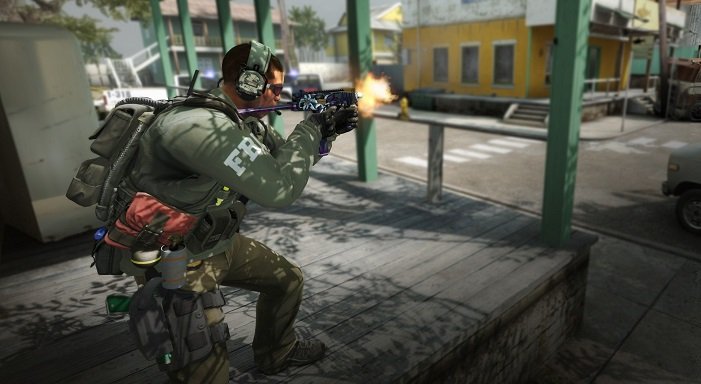Counter-strike 1.6 (2003) game icons banners: What you need to know

Join me on an extensive journey into the world of Counter-Strike 1.6, where every icon and banner tells a story of strategic gameplay, visual design, and cultural impact. Discover the evolution, tactical nuances, lasting influence, and legacy of these iconic graphics that have shaped the gaming industry and captivated gamers worldwide.
Introduction: Icons and Banners in Gaming
Icons and banners are fundamental components of gaming interfaces, serving as visual representations that convey essential information, enhance player interaction, and contribute to the immersive experience of virtual worlds. In Counter-Strike 1.6 (2003), these graphics play a pivotal role in distinguishing factions, highlighting weaponry, and facilitating strategic decision-making within the context of competitive multiplayer gameplay.
Evolution of Counter-Strike 1.6 Icons
When Counter-Strike 1.6 was released in 2003, its icons represented a significant advancement in visual communication and user interface design within the first-person shooter genre. The iconic symbols for terrorist (“T”) and counter-terrorist (“CT”) factions exemplified the game’s emphasis on team-based tactics and strategic realism. These symbols not only served as identifiers but also fostered a sense of team identity and cohesion among players, laying the foundation for strategic gameplay dynamics that define Counter-Strike’s competitive appeal.
Design Philosophy: Functionality and Visual Clarity
The design philosophy behind Counter-Strike 1.6’s icons prioritizes functionality, visual clarity, and tactical utility. Each icon is meticulously crafted with distinct shapes, colors, and symbols to ensure immediate recognition and differentiation during fast-paced gameplay scenarios. This intentional design approach enhances player immersion by providing intuitive visual cues that aid in strategic decision-making, tactical coordination, and situational awareness on the battlefield.
Tactical Role of Icons in Gameplay
In the competitive arena of Counter-Strike 1.6, icons serve as indispensable tools that inform strategic decisions and enhance team dynamics. The “T” and “CT” symbols enable players to quickly identify allies and adversaries, facilitating effective communication and coordinated actions in real-time. Weapon icons further augment gameplay depth by conveying essential information about each weapon’s attributes, capabilities, and tactical suitability, empowering players to make informed decisions regarding weapon selection and combat strategy.
Impact on Gameplay Dynamics and Strategy
The integration of icons and banners in Counter-Strike 1.6 fundamentally shapes gameplay dynamics and strategic depth. Clear and concise visual communication fosters teamwork, coordination, and dynamic interactions among players, contributing to a competitive environment where tactical ingenuity and adaptability are essential to achieving victory. Moreover, the strategic deployment of icons encourages nuanced gameplay strategies that evolve dynamically in response to changing battlefield conditions, ensuring the game’s enduring appeal and replayability over time.
Cultural Significance and Enduring Legacy
Beyond their functional role, Counter-Strike 1.6’s icons and banners hold significant cultural significance within the gaming community. They evoke nostalgia among veteran players who reminisce about their experiences with the game’s iconic graphics and strategic gameplay. Furthermore, these graphics have influenced the evolution of visual communication in gaming interfaces, serving as a benchmark for clarity, functionality, and aesthetic appeal in subsequent generations of multiplayer shooters and competitive esports titles.
Technological Innovation and Visual Representation
The development of icons and banners in Counter-Strike 1.6 represents a milestone in technological innovation and visual representation within the gaming industry. As one of the pioneering first-person shooters of its time, Counter-Strike 1.6 pushed the boundaries of graphical fidelity and user interface design, demonstrating the transformative potential of interactive entertainment to deliver immersive, engaging, and visually compelling experiences to a global audience of gamers.
Rediscover Gaming’s Legacy
Whether you’re revisiting Counter-Strike 1.6 or exploring its legacy for the first time, take a moment to appreciate the artistry and ingenuity behind its icons and banners. They are not merely visual elements but symbols of creativity, strategy, and technological advancement that define the art of gaming. This extensive analysis provides a comprehensive exploration of Counter-Strike 1.6 (2003) game icons banners, highlighting their evolution, tactical significance, cultural impact, and enduring legacy within the realm of game design and interactive entertainment.
Conclusion:
In conclusion, Counter-Strike 1.6 (2003) game icons banners exemplify the intersection of artistry, functionality, and innovation in game design. From their strategic role in gameplay to their enduring cultural impact, these graphics embody the essence of gaming excellence and continue to inspire and captivate gamers worldwide. As we reflect on their legacy, we acknowledge their contribution to shaping the gaming landscape and enhancing the immersive experience of interactive entertainment.





